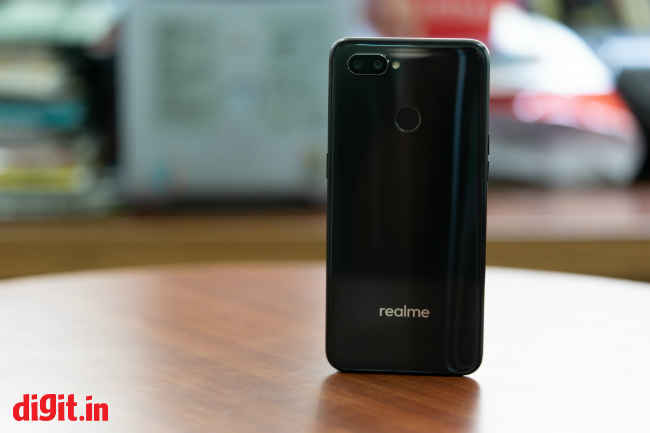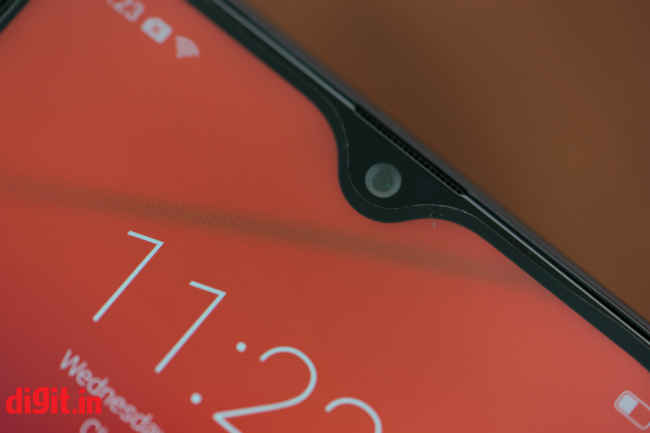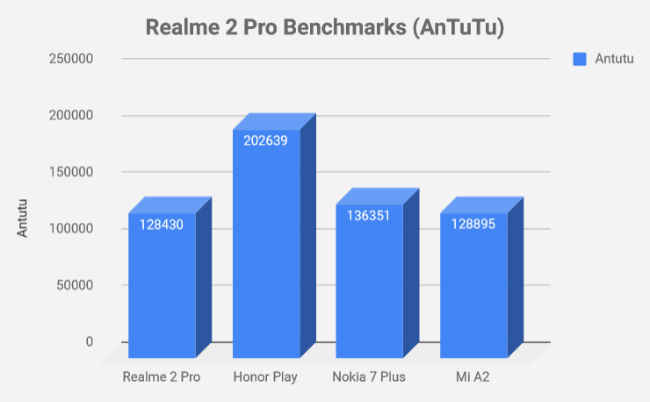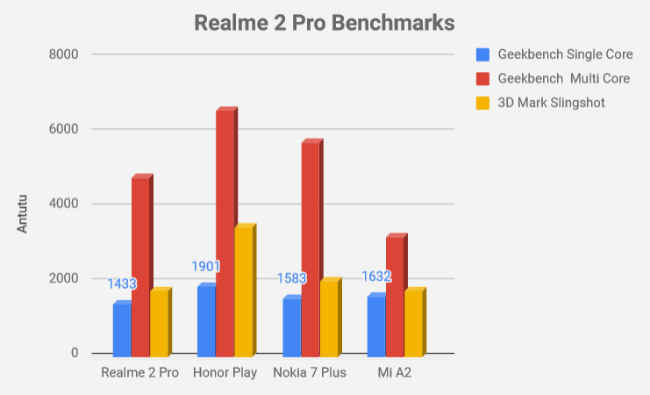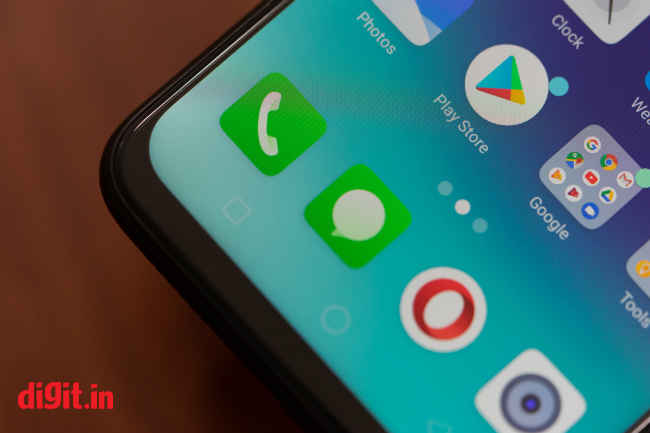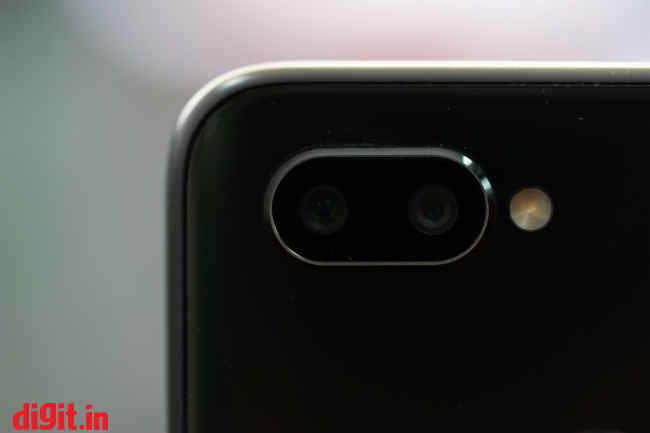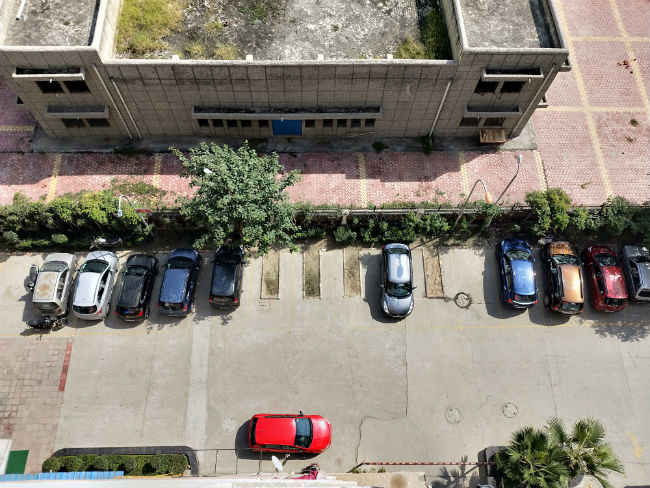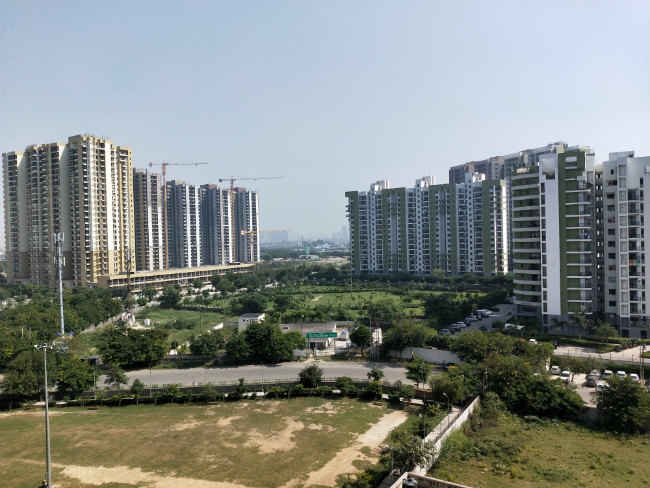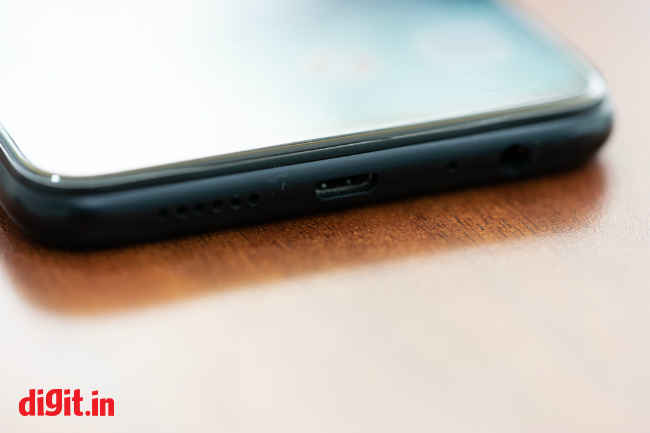Realme 2 Pro Review : Powerful, good looking and affordable
The Realme 2 Pro undercuts its rivals by introducing a top-of-the-line mid-range chipset from Qualcomm at a price never before seen. Further, it also sports the latest notched design and a laminated glass body. In comparison to many other phones, the Realme 2 Pro certainly looks enticing, but like everything else, it's not perfect either. Read the full review to find out.
The Realme 2 Pro punches way above its belt considering the features on paper. But with established incumbents like the Xiaomi Mi A2, Honor Play and convincing new entrants like the Moto One Power on the prowl, does it have enough for the feature-hungry Indian smartphone buyer to be satisfied? Let’s find out.
Design
Realme, as a brand, is quite focussed on making the latest design innovations more affordable. It started with a diamond-cut glass design with the Realme 1, followed by the notch on the Realme 2. Now on the Realme 2 Pro, it implements the valley-shaped notch which the company calls ‘Dewdrop notch’. It’s shaped like a water droplet, much like the Oppo F9 Pro and the Vivo V11 Pro, both of which are ultimately owned by the same parent company — BBK Electronics. It’s easy to see how the achievements of design R&D is trickling down to all the brands under the parent company. As a result of the tiny cutout on the screen, the screen real estate is now much more than usual, a whopping 90.8 percent of the body. The phone also shaves off the bezels to a minimum from all sides making the panel feel truly immersive.
The rear part of the phone is laminated in multiple layers giving it a glass-like surface. The underlying material seems to be toughened polycarbonate. Realme claims it offers resistance to heat and scratches, but is quite the smudge magnet. You do get a case that has flaps to protect the USB port and the headphone jack. The phone is also quite thick at 8.5mm and bulky at 174 grams, but not as unweildy as the Moto One Power. It’s easy to hold although the laminated layers don’t stretch to the edges leaving them quite rough. The display is also a bit raised from the body and I have doubts it can take the damage from a full-frontal drop. Realme, however, claims the display is protected by a Corning Gorilla Glass 3 panel on top. The dual camera unit at the back is also a bit raised from the body leaving it exposed to damage in case of a fall. Realme does claim to have performed a range of durability tests, but they are all lab-simulated and may not be reflective of real world abuse.
The Realme 2 Pro, overall, looks much more refined than the average Xiaomi phone or even the Asus Zenfone Max Pro M1. Between this and the Nokia 6.1 Plus though, I prefer the latter for its seamless, compact design.
Display
Update: We had earlier mentioned the Realme 2 Pro has the Widevine L1 certification required to stream Netflix content in HD. It actually has L3 certification. We regret the inconvinience caused.
The Realme 2 Pro features a 6.3 -inch IPS LCD fullHD+ display. Thanks to the new notch, it’s also quite big and offers a 19.5:9 aspect ratio. The smaller notch makes more space for the status bar icons, but all apps aren’t optimised for the new size. It’s only a matter of time as more phones are expected to sport a similar design. The Realme 2 Pro is also Widevine L3 certified and can't stream Netflix and Amazon Prime Video content in high definition, similar to other Xiaomi and Honor devices. The panel is also quite bright and vibrant and watching movies is a pleasurable experience. The recorded brightness of the panel came to be around 512 lux which is enough to make the content legible under direct sunlight.
Realme offers options to adjust the colour temperature, which is on the cooler side by default, along with turning on the blue light filter. Now that the notch has shrunk in size, Realme has removed the option to hide it which could be a bummer for some. The notched area does house extra information like shortcuts to pre-fixed apps while watching a video or playing a game.
The extra screen space comes handy when you’re playing a game, although games like PubG Mobile are not yet adapted to it and a tiny portion of the screen gets cropped out (including the controls by default). YouTube and Netflix too aren’t optimised and the video wraps around the notch.
The Realme 2 Pro’s display is one of the highlights of the phone, and if you’re annoyed by the notched displays available in that price range, this is a good option to go for.
Performance and Software
The Realme 2 Pro manages to bring the Qualcomm Snapdragon 660 chipset down to the under-15k price range. It was earlier reserved for more expensive phones with the likes of the Nokia 7.1 Plus, Vivo V11 Pro and the Xiaomi Mi A2. The base variant’s competition are mostly powered by the Snapdragon 636, and it is in this segment, that the Realme 2 Pro topples the rest in terms of performance. That certainly would have been a commendable achievement, but just like the Realme 1, the Realme 2 Pro also cheats on benchmarks by running the chipset at its max clock speed at all times while running a benchmark app.
Fudging benchmarks.. again
We found the Realme 2 Pro performs abnormally fast for all the benchmark apps we use to grade smartphones — Geekbench, AnTuTu, 3DMark and GFX Bench. In all of them, the Snapdragon 660 was programmed to run on peak clock speed even when the load on the processor was lesser. It’s exactly what we had seen back in the Realme 1. A recent investigation also revealed the Realme 2 and other phones from Oppo are also doing the same. The investigation was based on a private app provided by UL, the company behind popular benchmarking app 3D Mark. We haven’t managed to get our hands on the privately signed app yet. Once we do, we will perform the same tests to see if the results corroborate. Now, it’s true that benchmark numbers don’t really convert to stable real-world usage, but companies like Realme, Oppo and Huawei rely on these numbers heavily to market their devices. Being lied to is never a good thing, and despite being a high-performing phone for the price range it’s offered at, the Realme 2 Pro seems untrustworthy. If the company isn’t confident about it’s own performance, who knows what else they are hiding under the shiny exterior?
The Snapdragon 660 has proven to be quite a powerful performer though. It can handle most of tasks a phone will perform on a daily basis — social media browsing, taking photos, high-speed LTE connectivity, multi-tasking and more. The Realme 2 Pro too can grind through most of these tasks without a hitch. The polished ColosOS 5.2 UI, despite being on the heavier side, doesn’t slow down the phone. I had multiple apps launched in the background, and still the phone performed fine.
Games like PubG Mobile, Asphalt 9 and Injustice 2, all ran smoothly. PubG Mobile ran on medium graphics but there wasn’t a noticeable drop in frame-rates. The phone also supports Dual 4G and Dual Standby which means you can keep playing on your data connection, even when you receive a call.
The Realme 2 Pro runs on ColorOS 5.2. It’s Oppo’s latest version of its user interface and looks quite different from stock Android. It’s far more polished though from the previous versions and houses a lot of customisable features that will keep an enthusiast busy for months. There’s still no app drawer though, and the icons are rather large. Installing too many clutters the homescreen to the point that the wallpaper in the background is barely legible. Some argue that the apps are easily accessible, but try finding that one app you’re looking for among a bunch of other similarly looking icons and you’ll understand my frustration.
The Realme 2 Pro offers a dedicated gaming mode that disables alerts and boosts the performance. There’s face unlock that also works quite fast (no idea how secure it is though), there’s a sidebar housing customisable shortcuts and gesture-based actions. All of these features are not found in a phone powered by stock Android and is a strong argument in favour of custom ROMs.
Camera
The Realme 2 Pro also managed to impress with its camera capabilities at its grand launch. Like most mid-rangers, it also sports dual cameras on the back. The primary camera has a Sony IMX398 16MP sensor which Sony developed in collaboration with Oppo. This sensor powers quite a few selfie-centric Oppo phones and the older OnePlus 5 and the OnePlus 5T. The lens has f/1.7 aperture while the sensor size is 1/2.8" with 1.12um pixels. It’s quite capable in producing good shots, but I wasn’t a fan of Realme’s beautifying filters on portraits. There’s also a secondary 2MP depth sensor along with the primary sensor to produce bokeh shots. Up front is another 16MP sensor with f/2.0 aperture.
Daylight
The Realme 2 Pro can take bright and vibrant photos with ample sunlight. The colours like red and blue pop out of the frame with high contrast and high saturation, while details on far-away buildings can be made out easily. The dynamic range, like most other phones in its segment, leaves a lot to be desired.
Indoors
The Realme 2 Pro is also quite capable in taking good photos indoors. The colour saturation and contrast is also higher in this and that helps in making the photos look more palatable. You can see the results for yourself.
Lowlight
Surprisingly, the Realme 2 Pro is quite capable in taking low-light shots. There’s lesser grains as compared to other phones in that price range, while the colours are preserved to a certain degree. There’s lesser details in the shadows though, but that is expected for a phone in this price range.
Front Camera
The Realme 2 Pro carries Oppo’s DNA of taking good selfies. By good, I mean the smoothened beauty effects that Oppo’s algorithms apply to make your face glow and look more vibrant. While that does make you look good to a certain extent, most of the facial details are lost in the process. It’s good for social media traction, but not much for smartphone photography enthusiasts.
Battery
The Realme 2 Pro, thanks to the energy-efficient processor and a 3,500mAh battery last well over a day. In our PCMark Work 2.0 battery test, the Realme 2 Pro lasted 9 hours 29 minutes. That’s surprisingly a lot as compared to other phones with similar battery sizes. However, the Realme 2 with a larger 4,230mAh battery outlasts the Realme 2 Pro.
I used the phone to take photos, browse the web and social media, watch a few episodes and more, and managed to make it last well over a day. The phone charges using a regular 5V/2A charger that can charge the phone to 15 percent in around 15 minutes. There’s no support fast charging even though the Snapdragon 660 comes with support for Quick Charge 4.0.
Bottomline
The Realme 2 Pro is certainly powerful. It also looks different from the usual crop of metal-body phones. But the company doesn’t seem to be confident enough in its performance as showed by the fudged benchmark scores. It runs almost everything you throw at it without much of a hitch and the refined UI adds to the polished experience of the phone. But if you ask me, the 8GB RAM and 128GB storage variant doesn’t seem all that enticing considering the restraints put forth by the processor. Further, with a dedicated slot to expand storage by upto 256GB, there really is no need to get the top most variant here. Instead, if you have a budget of around Rs 14,000, this phone is a no-brainer.

